What would happen if we invited a visual artist into the Modest rehearsal room to observe the process of creating a play, and then respond to it through their preferred medium?
That was an idea posed by Jill Howitt and Thomas Robinson of the Critical Fish, an artist-led project in Hull which promotes critical but accessible writing about art and visual culture.
And it was an idea we loved. We’ve paid for an embedded critic to join us in the room before, so why not an embedded artist?
Step forward Celeste Richardson, an artist living and working in Hull, who is studying for a BA in Fine Art at Hull School of Art and Design. They graduate in summer 2023 and make figurative oil paintings.
Celeste’s practice is a continuous investigation into making sense of and expressing one’s own queer identity. Their paintings examine compartmentalised, conflicting versions of self and converge them on the canvas, celebrating gender non-conformity and fluidity.
They are influenced by contemporary drag performers, and Michael Warner’s writings on Counterpublics. Perfect for Modest, then.
Celeste joined us for a full day of rehearsals on Tuesday 9 May, when the company was working on staging the final few scenes of the show, as well as recapping choreography so far.
Below are their sketches from that day, accompanied by some thoughts on the process.
Celeste Richardson
“I immediately noticed the collaborative nature of the rehearsal process. The actors and creative team work together, generating ideas all the time and listening to every voice in the room.
“This allows the scenes to be delivered in a way that feels authentic and representative of the people who relate to the story, because the actors have a say.
“Because of this, the rehearsal room was a completely safe space. Everyone has the confidence and support to be themselves, make suggestions, experiment, try things, fail, try again, free of judgement.
“This environment of total acceptance is something I have not experienced to this degree of completeness, and I felt an atmosphere of optimism, excitement and electricity from this that was hugely inspiring and affirming for me personally.
“I would describe the actual process of constructing the scenes as representative of queerness, not just the themes of the play.”
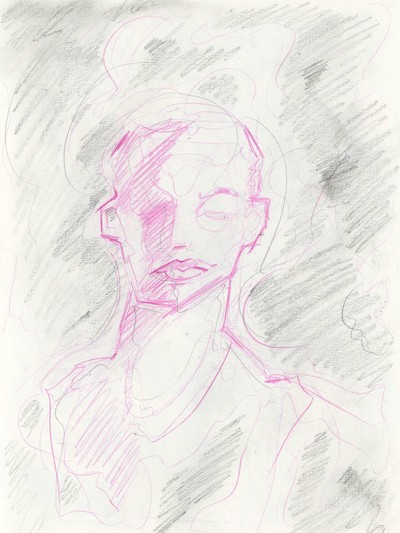
#1
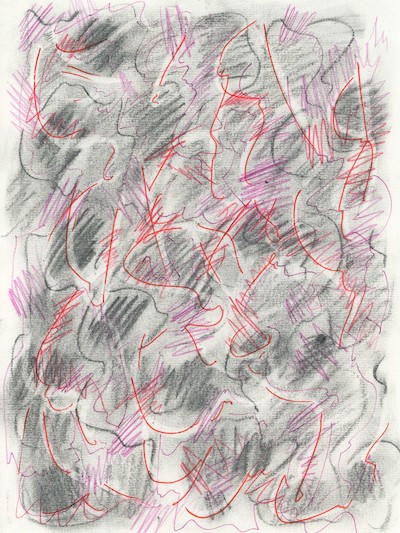
#2
Drawings #1 and #2 were responses to this. I was focusing on that idea of a concentration of energy and that being a catalyst for playfulness, freedom, fluidity, identity evolving/shifting and elevating queer voices. I loved how everyone was taking up space in the room, being loud, vocal and unapologetic.
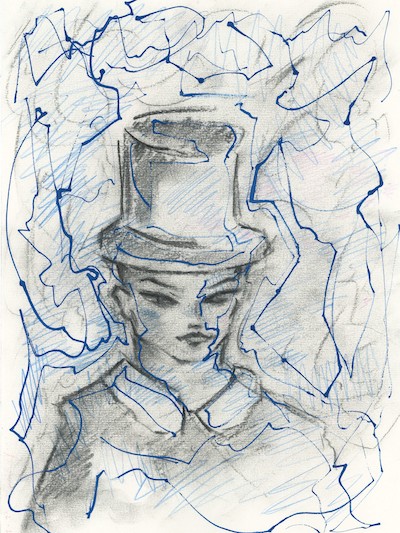
#3
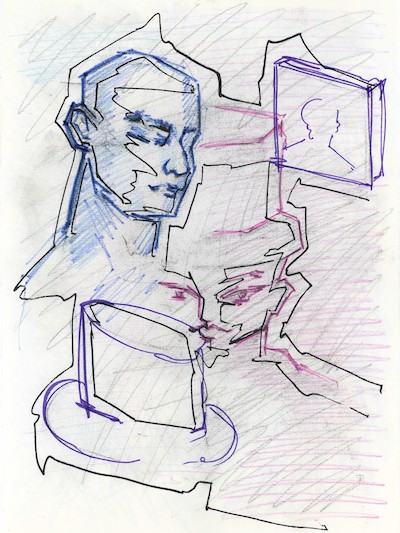
#4
Drawings #3 and #4 respond more directly to the material and characters. The inclusion of the top hat is a clear subversion of gender roles at the time, so these drawings were playing on that breaking down of the categories of gender, with references to classical busts with the statue-like figures.
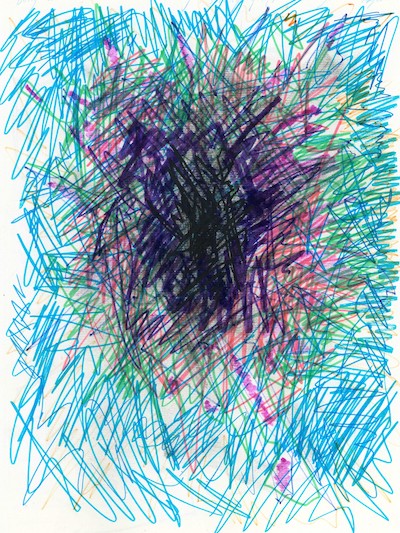
#5
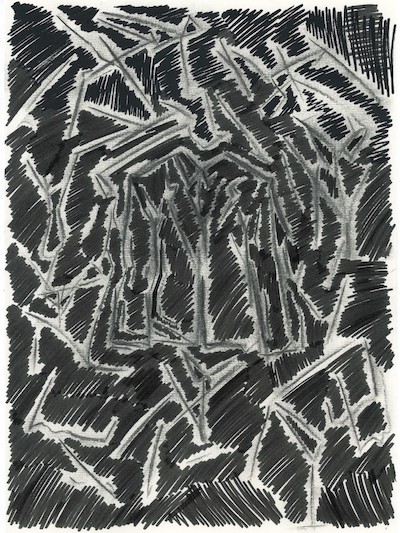
#6
Drawing #5 responds to the ‘Bossy Women’ song. I felt an intensity and strength that gained amplitude as the song went on and as the characters realised their power and ambition. I wanted to capture the feeling of a collision of energy.
Drawing #6 responds to the scene where Elizabeth gets rejected by the RA. This scene, to me, was an abrupt reminder of the boundaries in place for the characters.
I started with the imagery of a business suit and exaggerated the harsh lines of that image, playing off my initial drawings that focused on energy, freedom and fluidity, and directly opposing that: the dark, opaque marks absorb and diminish energy, and the jagged lines are sharp and unforgiving.
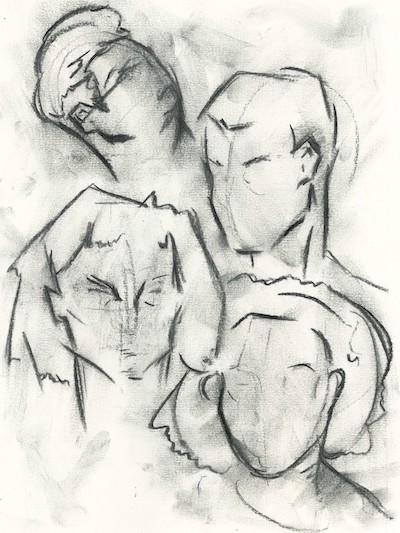
#7
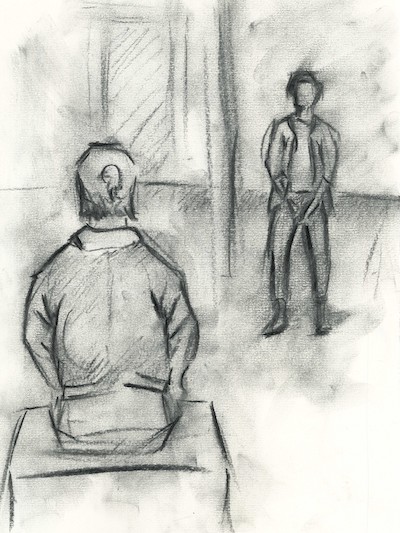
#8
Drawing #7 responds to the feeling of empowerment for women and queer people that the play champions. I quickly sketched different iterations of gender presentation, trying to embody that same sense of energy and potential.
My material selection was important for all the responses, e.g., graphite and charcoal naturally refuse detail, which allows me to suggest shapes and focus on the overall feeling of the drawing and not get caught up in details within the figures that do not matter.
Drawing #8 responds to the scene where Malais and Elizabeth talk after her rejection. I was intrigued by the actors’ positioning in the space; being across the room from each other amplified the tension between them during this emotional scene.
I felt the lack of colour was important here, as this scene is another moment where the characters are grounded, reminded of the reality of the boundaries at play for them.
Middle Child would like to thank Celeste for joining us in the room, as well as Jill Howitt and Thomas Robinson of The Critical Fish for suggesting the idea and then putting us in touch with Celeste.
It’s the first time we’ve shared our process in this way and found it hugely inspiring to see a visual artist respond to our work and with such immediacy.
The Critical Fish will also be running a free workshop at Ferens Art Gallery, on Saturday 27 May, to view and discuss Elizabeth Thompson’s painting The Return from Inkerman.
Book your place when buying a ticket for Modest at Hull Truck Theatre.
